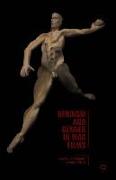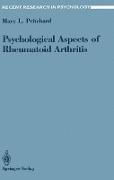German people of World War I
BücherAngebote / Angebote:
Source: Wikipedia. Pages: 32. Chapters: Prince Maximilian of Baden, Theobald von Bethmann-Hollweg, Käthe Kollwitz, Arthur Zimmermann, Armin T. Wegner, Johann Heinrich von Bernstorff, Wilhelm Wassmuss, Karl Max, Prince Lichnowsky, Reinhard Johannes Sorge, Wilhelm Solf, Franz von Rintelen, Paul Oskar Höcker, Karl Rasche, Wilhelm Zaisser, Anton Schnack, Carl Hans Lody, Felix von Hartmann, Georg von Hertling, Anton Dilger, Georg Michaelis, Vincent Kraft, Hans Freiherr von Wangenheim, Rudolf Querner, Walter Nicolai, Heinrich von Eckardt, Alfred Bielschowsky, Oskar Ursinus, Richard von Kühlmann, Bun Troy, Heinrich Albert, Karl Boy-Ed. Excerpt: Käthe Schmidt Kollwitz (July 8, 1867 - April 22, 1945) was a German painter, printmaker, and sculptor whose work offered an eloquent and often searing account of the human condition in the first half of the 20th century. Her empathy for the less fortunate, expressed most famously through the graphic means of drawing, etching, lithography, and woodcut, embraced the victims of poverty, hunger, and war. Initially her work was grounded in Naturalism, and later took on Expressionistic qualities. Kollwitz was born in Königsberg, Province of Prussia (now Kaliningrad, Russia), the fifth child in her family. Her father, Karl Schmidt, was a radical Social democrat who became a mason and house builder. Her mother, Katherina Schmidt, was the daughter of Julius Rupp, a Lutheran pastor who was expelled from the official State Church and founded an independent congregation. Her education was greatly influenced by her grandfather's lessons in religion and socialism. Recognizing her talent, Kollwitz' father arranged for her to begin lessons in drawing and copying plaster casts when she was twelve. At sixteen she began making drawings of working people, the sailors and peasants she saw in her father's offices. Wishing to continue her studies at a time when no colleges or academies were open to young women, Kollwitz enrolled in an art school for women in Berlin. There she studied with Karl Stauffer-Bern, a friend of the artist Max Klinger. The etchings of Klinger, their technique and social concerns, were an inspiration to Kollwitz. At the age of seventeen, Kollwitz became engaged to Karl Kollwitz, a medical student. In 1888, she went to Munich to study at the Women's Art School, where she realized her strength was not as a painter, but a draftsman. In 1890, she returned to Königsberg, rented her first studio, and continued to draw laborers. In 1891, Kollwitz married Karl, by this time a doctor, who tended to the poor in Berlin, where the couple moved into the large apartment that wou
Folgt in ca. 5 Arbeitstagen




